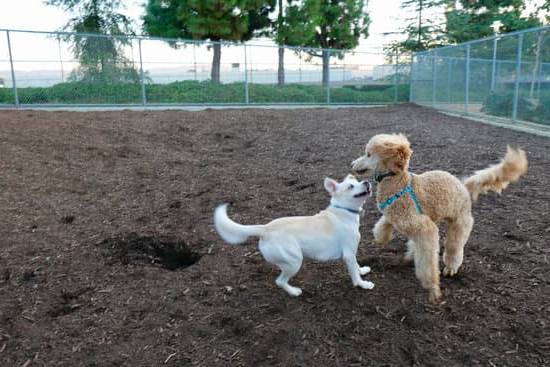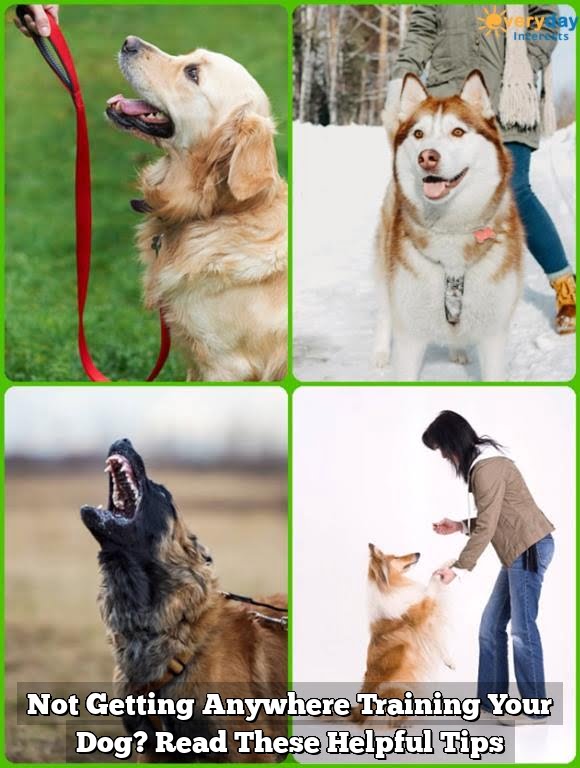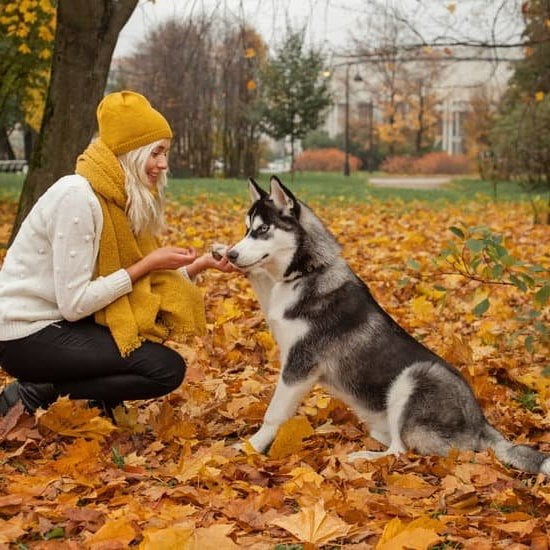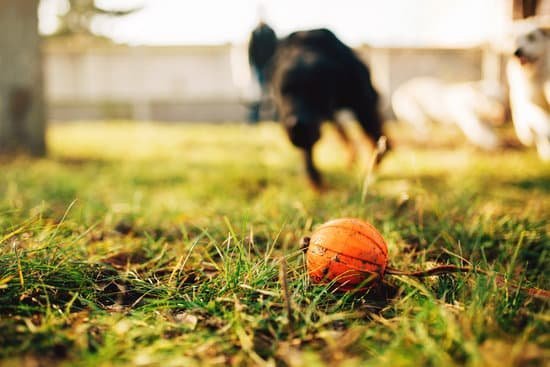Training a dog is an essential aspect of responsible pet ownership. It not only ensures their safety and well-being but also strengthens the bond between dog and owner. However, training can sometimes be challenging, especially if we fall into common mistakes that hinder our progress. In this blog post, we will explore the crucial aspects of what not to do when training a dog, shedding light on the potential consequences of improper training techniques.
When it comes to dog training, consistency is key. Inconsistent behaviors can confuse dogs and impede their learning process. Imagine changing the command words or allowing different rules from various family members – it sends mixed signals to our furry companions. Physical discipline is another detrimental practice that should be avoided. While some may believe it establishes dominance, it can have negative psychological effects on dogs and even lead to increased aggression or fear.
Maintaining a calm and patient demeanor during training sessions is vital as well. Yelling or using a harsh tone can intimidate our dogs, causing fear or anxiety instead of fostering a positive learning environment. Moreover, overwhelming training sessions with too much information at once can frustrate our beloved pets instead of helping them progress gradually.
Neglecting socialization and clear communication are also prevalent mistakes in dog training. Early and continuous socialization exposes dogs to different environments, people, and animals, preventing behavioral issues down the line. Meanwhile, unclear signals and mixed messages can confuse our furry friends instead of reinforcing desired behaviors.
Lastly, neglecting positive reinforcement and mental stimulation are pitfalls many trainers fall into. Positive reinforcement techniques such as treats or praise play a crucial role in motivating dogs during their learning journey. Similarly, mental stimulation through puzzle toys or obedience games promotes their overall well-being and helps prevent boredom-induced destructive behaviors.
In this blog post series on what not to do when training a dog, we will delve deeper into each mistake outlined above while providing tips on effective alternatives. Let’s ensure our furry friends receive the best training experience possible, setting them up for a lifetime of obedience, happiness, and fulfillment.
Lack of Consistency
The Significance of Consistency in Dog Training
Consistency is a crucial aspect of successful dog training. Dogs thrive in a consistent environment where they know what is expected of them. When you are inconsistent with your training methods, it can confuse your dog and hinder their progress. To ensure effective training, it is important to establish clear expectations and consistently reinforce the desired behaviors.
Avoiding Inconsistent Behaviors
One common mistake that many dog owners make is changing command words or using different rules from different family members. For example, if you use the command “sit” one day and “stay” the next day to ask your dog to sit, this inconsistency can be confusing for them. Similarly, if one family member allows the dog on the couch while another does not, it sends mixed signals to your furry friend.
To avoid these inconsistent behaviors, create a set of command words that you will consistently use during training sessions. Make sure everyone in the family understands and sticks to these command words. Additionally, establish a set of rules that apply to all family members when interacting with the dog. By maintaining consistency in both commands and rules, you will help your dog better understand what is expected of them.
Importance of Reinforcing Consistent Behavior
When your dog exhibits consistent behavior, such as following a command or displaying good manners, it is essential to reward and reinforce those actions consistently as well. This reinforcement can be done through treats, praise, or any other positive reinforcement techniques that work well for your dog. By consistently rewarding desired behavior, you are more likely to see those behaviors become ingrained habits in your furry friend.
Inconsistency in training can lead to frustration for both you and your canine companion. By being mindful of remaining consistent in your commands, rules, and rewards during training sessions, you will provide a clear structure for learning. Remember that patience and consistency are key for effective dog training and ultimately, a well-behaved and happy pup.
Using Physical Discipline
When it comes to training a dog, using physical discipline is a common mistake that should be avoided at all costs. Many owners may resort to physical punishment out of frustration or as a misguided attempt to assert dominance. However, physical discipline can have serious negative effects on a dog’s well-being and overall training progress.
The Negative Effects of Physical Punishment
Physical punishment, such as hitting or slapping a dog, can cause both physical and psychological harm. Physically, it can lead to injuries like bruises or broken bones, and in extreme cases, it may even cause internal damage. Beyond the physical impact, dogs subjected to physical discipline often experience heightened fear and anxiety, leading to behavioral issues such as aggression or withdrawal.
Alternative Positive Reinforcement Techniques
Instead of resorting to physical punishment, positive reinforcement techniques are much more effective and humane in dog training. Positive reinforcement involves rewarding desired behaviors with treats, praise, or other forms of rewards. This approach motivates dogs by associating good behavior with positive outcomes and helps build trust and confidence in their owners.
A few examples of positive reinforcement techniques include clicker training, where the sound of a clicker is used as a signal for correct behavior followed by treats; reward-based obedience training, which uses treats to reinforce obedience commands; or verbal praise combined with affectionate gestures when the dogs display desirable behavior.
By shifting towards positive reinforcement methods and away from physical discipline, owners can create a more supportive learning environment for their dogs while establishing a bond built on trust rather than fear.
Yelling or Using Harsh Tone
Using harsh tones or yelling during dog training can have negative effects on the overall progress and well-being of your furry companion. Dogs are highly sensitive to the tone of their owner’s voice, and using a loud, aggressive, or intimidating tone can lead to fear, anxiety, and even aggression in some cases. Therefore, it is important to maintain a calm and patient demeanor during training sessions.
When you yell or use a harsh tone while training your dog, you are essentially creating an environment of stress and discomfort for them. This can hinder their ability to learn and understand the commands you are trying to teach them. Dogs thrive on positive reinforcement and encouragement, so it is crucial to provide them with cues and corrections in a firm yet gentle voice.
Instead of resorting to yelling or using a harsh tone, focus on using clear and concise verbal cues. Use a consistent tone that is calm and reassuring so that your dog feels safe and encouraged throughout the training process. Positive reinforcement techniques such as treats, praise, or affection should be used to reward your dog for good behavior rather than punishment through yelling.
| Negative Effects of Yelling or Harsh Tone | Alternatives for Effective Training |
|---|---|
| – Fearful or anxious behavior | – Maintain a calm and patient demeanor |
| – Increased aggression | – Use firm yet gentle voice for commands |
| – Lack of trust and bonding | – Utilize positive reinforcement techniques (treats, praise) |
Remember that building a strong bond with your dog requires trust, patience, and effective communication. By avoiding the temptation to yell or use a harsh tone, you will create a positive and supportive learning environment for your furry friend, increasing the chances of successful training outcomes.
Overwhelming Training Sessions
When it comes to training a dog, it is important to keep the sessions short and manageable. Overwhelming a dog with too much information can lead to frustration and hinder their progress. Just like humans, dogs have limits to their attention span and cognitive abilities. By breaking down training into smaller, focused sessions, you can ensure that your dog stays engaged and motivated.
One mistake to avoid is cramming too many commands or tasks into one session. Trying to teach your dog multiple commands all at once can be overwhelming for them. It is best to focus on one command or task per session so that your dog can fully grasp and practice it before moving on to the next. This allows for more effective learning and prevents confusion.
Another aspect of overwhelming training sessions is the difficulty level of the tasks. It is important to start with simple and easy commands, gradually increasing the difficulty as your dog progresses. For example, if you are teaching your dog to sit, start by rewarding them when they lower their rear end slightly. As they become more familiar with the concept, increase the expectation until they are sitting completely.
Incorporating breaks during training sessions is also crucial in preventing overload for your dog. Giving them short breaks allows them time to process what they have learned and recharge for the next part of the session. Use these breaks as an opportunity for praise or playtime so that your dog associates training with positivity.
By avoiding overwhelming training sessions and focusing on shorter, manageable ones, you set up your dog for success in their learning journey. Keep in mind that each dog learns at their own pace, so be patient and adjust the pace accordingly. With consistent and manageable training sessions, you will see significant progress in your dog’s behavior and abilities over time.
| Common Mistakes | Consequences |
|---|---|
| Overwhelming training sessions | Frustration and hindered progress in learning |
| Cramming too many commands/tasks into one session | Confusion and decreased effectiveness of learning |
| Starting with tasks that are too difficult | Discouragement and potential loss of motivation for the dog |
| Not incorporating breaks during sessions | Overload and reduced attention span in the dog |
Neglecting Socialization
Socialization is a crucial aspect of dog training that should not be overlooked. It involves exposing dogs to different environments, people, and animals in order to help them develop proper social skills and behavior. Neglecting socialization can have negative consequences for both the dog and their owner. In this section, we will discuss the importance of early and continuous socialization for dogs, the potential consequences of neglecting it, and provide tips for incorporating socialization into training routines.
Early and continuous socialization is essential for puppies to become well-adjusted adult dogs. During their early developmental stages, puppies are more receptive to new experiences. By exposing them to various stimuli in a positive and controlled manner, it helps build their confidence, reduces fear or anxiety towards unfamiliar situations, and encourages appropriate behavior around people and other animals.
Neglecting socialization can result in behavioral problems later in life. Dogs who lack exposure to different environments or encounters with strangers may become fearful or aggressive when faced with new situations or individuals. They may also have difficulty interacting with other dogs, leading to problems during walks or trips to the dog park.
To incorporate socialization into training routines, it is important to expose your dog to a variety of experiences gradually. Start by introducing them to different places such as parks, busy streets, or even pet-friendly stores. Allow them to interact with friendly people from all age groups, including children. Supervised playdates with well-behaved dogs can also aid in enhancing their social skills.
Furthermore, enrolling your dog in obedience classes or puppy kindergarten can provide structured socialization opportunities under the guidance of professional trainers. These classes not only expose your dog to new environments but also teach them how to respond appropriately in various situations while being around other dogs.
Lack of Clear Communication
One of the most crucial aspects of dog training is clear and consistent communication. Without it, both dogs and their trainers can become frustrated and confused, hindering the progress of the training process. Clear communication involves not only verbal cues but also non-verbal signals that dogs rely on to understand what is expected of them.
During training sessions, it is important to use concise and consistent commands or cues that are easy for the dog to understand. For example, if you use “sit” as the command for your dog to sit down, stick to using that word consistently instead of using different words like “sit down” or “take a seat.” Dogs are quick to associate certain sounds with specific actions, so using consistent language helps them understand what is being asked of them.
In addition to verbal cues, non-verbal signals such as hand gestures or body language can play a significant role in communicating with dogs during training. For example, raising your hand with an open palm can be used as a universal signal for “stop,” and pointing your finger at something can be understood as a cue for attention or direction.
By incorporating clear non-verbal signals along with verbal commands, you enhance the overall clarity of your communication with your dog.
It’s important to remember that dogs don’t inherently understand human language or intentions. Therefore, by prioritizing clear and consistent communication in your training sessions, you set both you and your dog up for success. When dogs understand what is being asked of them and are given clear signals to follow, they are more likely to respond positively and make progress in their training journey.
Ignoring Positive Reinforcement
Positive reinforcement is a powerful tool in dog training that should never be ignored. It involves rewarding desired behaviors with treats, praise, or other forms of reinforcement that the dog finds enjoyable. Ignoring positive reinforcement can have significant consequences on the effectiveness and progress of training sessions.
One mistake to avoid is neglecting to use rewards as motivators during training. Dogs are more likely to repeat behaviors that result in positive outcomes, so incorporating treats or praise can help reinforce desired actions. For example, when teaching a dog to sit, giving them a treat immediately after they successfully follow the command will reinforce the behavior and increase the likelihood of them sitting when given the command in the future.
Another mistake is not using positive reinforcement consistently throughout training sessions. Inconsistency can confuse dogs and make it difficult for them to understand which behaviors are being rewarded. It’s essential to establish clear guidelines for what behavior will be rewarded and consistently provide positive reinforcement when those behaviors occur.
In addition to treats and praise, there are various other forms of positive reinforcement that can be utilized during training sessions. This includes using favorite toys as rewards or incorporating playtime as a reinforcement tool. The key is to find what motivates your dog and use it as leverage in their training journey.
By recognizing the importance of positive reinforcement and implementing it consistently, you can create a more enjoyable and effective training experience for both you and your furry friend. Remember, by focusing on rewarding desired behaviors instead of punishing unwanted ones, you can foster a strong bond with your dog built on trust, patience, and encouragement.
Neglecting Mental Stimulation
Dogs, just like humans, require mental stimulation to maintain their overall well-being and behavior. Neglecting to provide adequate mental stimulation for dogs can lead to boredom, destructiveness, or behavioral issues. It is essential to incorporate mental exercises into your dog’s training routine to help keep their minds sharp and engaged.
A lack of mental stimulation can be detrimental to a dog’s health and happiness. When dogs are bored, they may resort to undesirable behaviors such as excessive chewing, digging, or barking. These behaviors often stem from frustration or a need for mental stimulation. By neglecting to provide mental exercise for your dog, you are not addressing their needs and setting them up for potential behavioral problems in the future.
To prevent this issue, it is crucial to incorporate mental exercises into your dog’s training routine. One effective way of providing mental stimulation is through the use of puzzle toys. These toys require dogs to problem-solve and think critically in order to access treats or rewards hidden within them. Puzzle toys come in various difficulty levels, allowing you to gradually increase the complexity as your dog progresses in their training.
Obedience games are another excellent method of incorporating mental stimulation into training sessions. Games like “find it” where you hide treats around the room and encourage your dog to search for them can engage their senses and keep their mind actively working during training sessions. Additionally, teaching your dog new tricks or commands on a regular basis can also provide them with the necessary mental exercise they need.
By incorporating these mental exercises into your dog’s training routine, you will not only create a more mentally stimulated and fulfilled dog but also help improve their behavior overall. Remember that each individual has different learning capabilities; therefore, patience is key during these activities. With consistent effort and dedication towards providing adequate mental stimulation, you will help create a happier and more well-behaved canine companion.
Conclusion
In conclusion, when it comes to dog training, there are several crucial do’s and don’ts that every owner should keep in mind. Consistency is key, as dogs thrive on routine and repetition. By maintaining a consistent approach to training, avoiding changes in command words or rules from different family members, we can set our furry friends up for success.
Physical discipline should never be used as a training method. It not only has negative effects on the dog’s well-being but can also lead to increased aggression or fear. Instead, positive reinforcement techniques such as treats or praise should be utilized to encourage desired behaviors and build trust and confidence in our dogs.
A calm and patient demeanor is vital during training sessions. Yelling or using a harsh tone may intimidate dogs and lead to fear or anxiety. By using a firm yet gentle voice, we can effectively convey commands and corrections while creating a safe and encouraging environment for learning.
Furthermore, it is important to avoid overwhelming our dogs with too much information during training sessions. Keeping the sessions short and manageable allows the dog to stay focused and prevents frustration. Gradually increasing the difficulty as they progress will help them build confidence and achieve long-term success.
Additionally, socialization plays a critical role in a dog’s development. Neglecting to expose them to different environments, people, and animals can result in behavioral issues later on. Incorporating socialization into their training routines by taking them on walks or arranging playdates with other friendly dogs will foster their social skills.
Clear communication is essential for effective training. Providing clear signals with concise verbal cues and consistent non-verbal cues eliminates confusion and allows our dogs to understand what we expect from them.
Lastly, neglecting mental stimulation can have detrimental effects on a dog’s behavior and overall well-being. Engaging them in mental exercises through puzzle toys or obedience games keeps their minds sharp, prevents boredom, destructiveness, and enhances their overall happiness.
By avoiding common mistakes highlighted in this article and instead focusing on positive and effective training techniques, every dog can reach their full potential. With patience, consistency, clear communication, and the use of positive reinforcement, we can build a strong bond with our furry companions while helping them become well-behaved members of our families. Remember, investing time and effort into proper training practices will lead to a lifetime of happiness for both you and your beloved four-legged friend.
Frequently Asked Questions
What should you not train a dog?
When it comes to dog training, there are certain behaviors or techniques that should be avoided. One thing you should not train a dog is to engage in aggressive behavior.
Teaching aggression can lead to unpredictable and dangerous outcomes, both for the dog and those around them. It is crucial to focus on positive reinforcement and redirecting unwanted behaviors rather than encouraging aggression or violence.
What is the number one rule in dog training?
The number one rule in dog training is consistency. Consistency plays a vital role in effectively training dogs. Dogs thrive on routine and predictability, so it is important to establish consistent rules and expectations.
This applies to everything from setting boundaries and enforcing them to using consistent commands and rewards. By being consistent with your approach, you provide clarity to your dog, helping them understand what behaviors are expected of them.
What should you not do when training a puppy?
Training a puppy requires patience, care, and understanding. One thing you should not do when training a puppy is resorting to punishment-based methods or physically punishing the pup for their mistakes. Harsh punishment or physical corrections can have negative consequences on the puppy’s emotional well-being and the bond between the two of you.
Instead, opt for positive reinforcement techniques such as treats, praise, and rewards when the puppy displays desirable behavior. Focusing on positive encouragement will create a more trusting relationship with your furry friend while making the learning process enjoyable for both of you.

Welcome to the blog! I am a professional dog trainer and have been working with dogs for many years. In this blog, I will be discussing various topics related to dog training, including tips, tricks, and advice. I hope you find this information helpful and informative. Thanks for reading!





